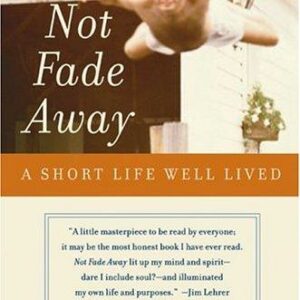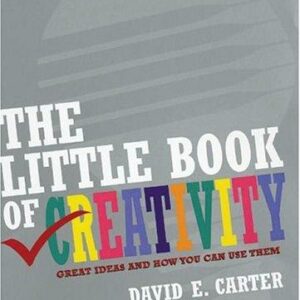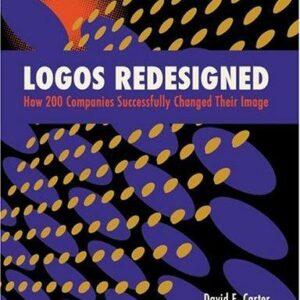Unreasonable Hospitality
$29.00
| Title | Range | Discount |
|---|---|---|
| Trade Discount | 5 + | 25% |
- Description
- Additional information
Description
Essential lessons in hospitality for every business, from the former co-owner of legendary restaurant Eleven Madison Park.
Will Guidara was twenty-six when he took the helm of Eleven Madison Park, a struggling two-star brasserie that had never quite lived up to its majestic room. Eleven years later, EMP was named the best restaurant in the world.
How did Guidara pull off this unprecedented transformation? Radical reinvention, a true partnership between the kitchen and the dining room—and memorable, over-the-top, bespoke hospitality. Guidara’s team surprised a family who had never seen snow with a magical sledding trip to Central Park after their dinner; they filled a private dining room with sand, complete with mai-tais and beach chairs, to console a couple with a cancelled vacation. And his hospitality extended beyond those dining at the restaurant to his own team, who learned to deliver praise and criticism with intention; why the answer to some of the most pernicious business dilemmas is to give more—not less; and the magic that can happen when a busser starts thinking like an owner.
Today, every business can choose to be a hospitality business—and we can all transform ordinary transactions into extraordinary experiences. Featuring sparkling stories of his journey through restaurants, with the industry’s most famous players like Daniel Boulud and Danny Meyer, Guidara urges us all to find the magic in what we do—for ourselves, the people we work with, and the people we serve.“Guidara makes his nonfiction debut with an enthusiastic guide for leaders [and asserts] sage advice about leadership.” – Kirkus Review
“Will Guidara is one of the very best in the hospitality business, but this book is for everyone. His insights on how to be a great entrepreneur cut through the noise.” – David Chang, chef and founder of Momofuku, and host of Ugly Delicious
“Working alongside Will Guidara is the ultimate masterclass in how to thoughtfully improve the lives of those around you. He is now sharing his truly remarkable gift with the world in this keenly observant and heartfelt must-read, for anyone looking to stand out from the pack.” –Dan Levy, Emmy® award winning writer, actor, director, and producer of Schitt’s Creek
“One of the five best management books I have ever read. Plus, it is the most engaging and entertaining – by a wide margin. This is, flat out, not a book to miss.” – Roger Martin, writer, strategy advisor and management thinker
“Will Guidara weaves heartfelt stories and keen observations to illustrate how purposeful, no-holds-barred hospitality satisfies our essential need to belong. An exceptional book for anyone or any organization aiming to excel at human connection.” – Danny Meyer, CEO of Union Square Hospitality Group and author of Setting the Table
“In this book, Will Guidara shows us how to lead and to serve at the next level by building a foundation of hospitality, and creating a people-first “working together” culture. It’s an inspiring book for businesses in every industry.” – Alan Mulally, former CEO of Boeing and Ford
“In dining rooms, in conference rooms, and in all corners of hospitality, Will Guidara has made a career out of going above and beyond, giving people what they want, even when they don’t know they want it. This book puts his story, and more than a few of his trade secrets, in your hands.” — Questlove
“Will gives us the best reason to be unreasonable—the people we serve. His approach to hospitality is novel, noble, and not at all exclusive to the restaurant industry. If you want to revolutionize the way you do business, you need this book!” — Dave Ramsey, bestselling author and radio host
“Making people feel welcome, accepted, appreciated, seen, known… what could be cooler than that? This is what Will has unlocked in this book: that hospitality is as thrilling and inspiring to give as it is to receive, both in work, and in life.”— Christina Tosi, founder and CEO of Milk BarWILL GUIDARA is the former co-owner of Eleven Madison Park and the NoMad, and is the cofounder of the Welcome Conference, an annual hospitality symposium. He has coauthored four cookbooks, was named one of Crain’s New York Business’s 40 Under 40, and is a recipient of WSJ. Magazine’s Innovator Award. He lives in the Hudson Valley with his wife, Christina, and their daughter, Frankie.US
Additional information
| Weight | 16.4 oz |
|---|---|
| Dimensions | 0.9800 × 6.2500 × 9.2700 in |
| Imprint | |
| ISBN-13 | |
| Author | |
| Audience | |
| BISAC | |
| Subjects | management books for new leaders, business management books, service, entrepreneurship, business books, BUS081000, management books, entrepreneur books, leadership books, customer service, leadership book, business biographies, leadership books for women, top leadership books, top 10 leadership books, restaurateur, business books best sellers 2022, business plan, money, hospitality, strategy, BUS097000, food book, food books, cooking gifts, motivational books, best business books, economics, Cooking, motivation, leadership, self help, business |
| Format |











